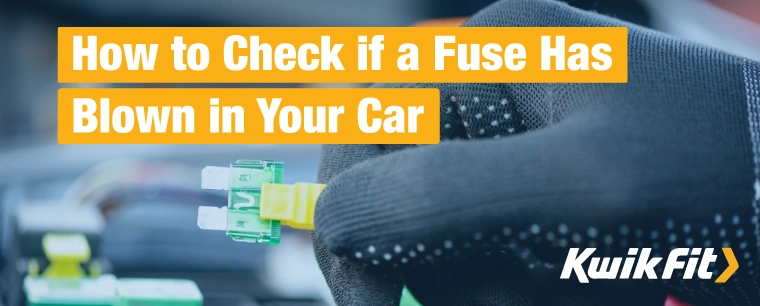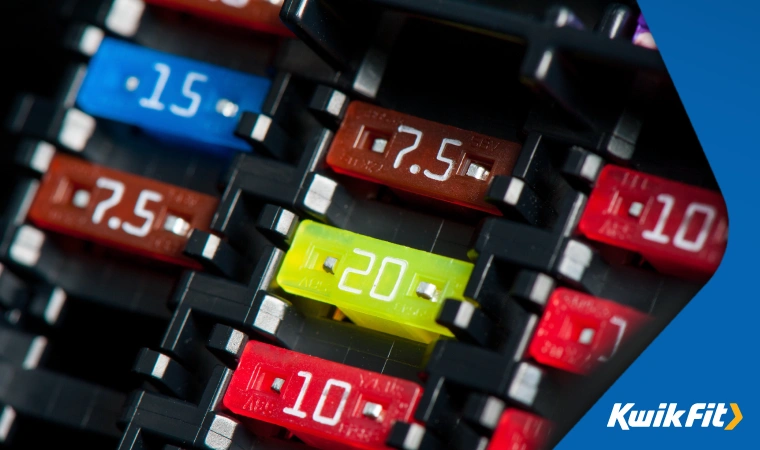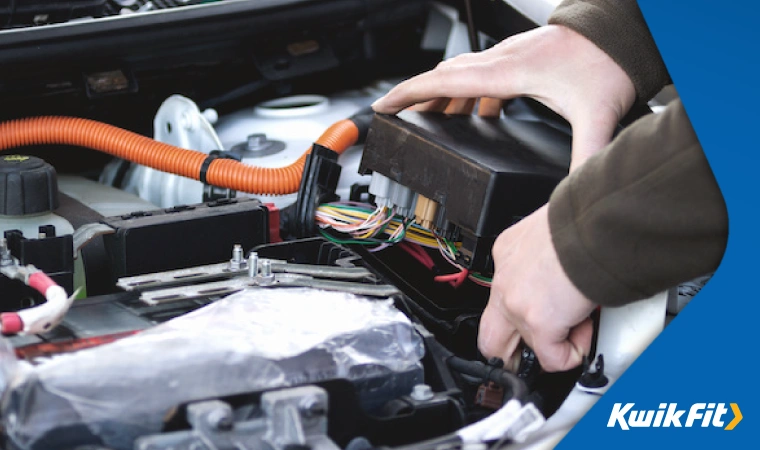How to Check if a Fuse has Blown in Your Car
Jack Dreyer | Friday 23rd September 2022 11:58am

If you’ve owned your car for long enough, the chances are that you’ll encounter a blown fuse at some point… It’s quite a common problem, after all.
Car fuses – also called ‘automotive fuses’ – are crucial components that, like regular fuses, are specifically designed to protect the electrical wiring of a car. Their primary function is to offer protection against overcurrents and things like short-circuiting. They simply disconnect the circuit if a potentially-dangerous level of current threatens to pass through.
But what happens when one of these fuses blows? Read on to find out.
Automotive fuses

Car fuses come in all shapes and sizes, with each variation being best suited to a specific application or electrical part in a car.
Most commonly, though, is the blade-type fuse. You may well have seen them: a coloured body made of plastic with two metal prongs to stick into a socket. Depending on the application, these fuses can be mounted into fuse holders, clips, or even blocks.
In a car, a blown fuse will manifest itself as a minor electrical problem such as the failure of interior lights, radio, indicator, or internal features such as climate control. Sometimes, though, it can be as serious as stopping the car from starting altogether.
Why do car fuses blow?
When fuses ‘blow’, the ribbon that allows the current to pass through melts and kills the circuit if too much current passes through. The excessive current comes from an electrical component drawing more than it can handle — this is usually due to a device malfunctioning.
Some of the most common reasons for an automotive fuse blowing include:
- Defective switches
- Faulty wires
- Mechanical issues with motor
- Rogue faults with electrically-motivated parts
How to check a blown car fuse
If one of your interior lights is no longer working, or your indicator appears to be broken, the chances are a fuse has blown. But now what?
Your first port of call should be to reach out to the professionals. Dealing with the electronics in a vehicle requires not only a steady hand but also expert knowledge. If you’re in doubt, call your local Kwik Fit for further advice — just to be on the safe side.
Out of curiosity, though, if you were to check for a blown fuse in your vehicle yourself, the following steps would need to be carried out.
1. Locate the fuse box
Depending on the make of the car, there may be as many as four fuse boxes located in various parts of the vehicle, and it is important you find the one with the blown fuse. For help, refer to your user manual to determine which fuse box controls which circuit and then go from there. Typically speaking, the following locations are the most common for fuse boxes to be placed:
- Under the bonnet
- Beneath the dashboard
- Underneath the back seats
- In the boot

2. Locate the individual the fuse
When you have located the culprit fuse box, you will need to identify the suspect fuse. Luckily, to make things easier, most fuse boxes will have an intricate diagram explaining the function and location of each fuse. If your fuse box does not come fitted with this luxury, you’ll have to use a test light. (This is now getting highly technical and would definitely be better left to the experts!)
If you are using the test light method, though, be sure to use a computer-safe one with an LED light. You will have to have the car running for this - but not fully. Just have the ignition on, but the engine off. (This is known as the ‘KOEO’ or ‘second key’ position).
Once the ignition is on, attach the clip for the test light to any exposed metal. Then, use the probe to touch each end of each fuse.
- If the fuse is working properly, the test light will illuminate on both sides.
- If the fuse has blown, only one side of the test light will illuminate.
3. Remove & inspect the fuse
After turning the car off completely, find your fuse and remove it by grabbing it with a fuse puller (these are usually stored inside the fuse box). If there isn’t one around, a trusty pair of needle-nose pliers will be sufficient too.
Once removed, you can begin to inspect the fuse. Still gripping it with the puller, hold the fuse up to the light (or a light source) and look through the translucent bodywork. You should see a thin metal wire in there. If the wire is no longer a continuous thread and appears broken or in two pieces, the fuse has indeed ‘blown’. If this is the case, it will need to be replaced.
From here you can go on to replace the fuse; however, as we’ve said, it really is best left to the professionals.

What to do if your car blows a fuse
If your car has blown a fuse, the easiest thing to do is call your local Kwik Fit centre and leave it to us to handle. Dealing with electrical faults can be dangerous and risky, one false move and you may end up doing more harm than good to your vehicle’s electrical system. So, get in touch with us today!
Any facts, figures and prices shown in our blog articles are correct at time of publication.
Featured Articles
Is it Illegal to Drive With One Headlight?
Saturday 19th July 2025
Wondering if it’s illegal to drive with one headlight? Learn about the safety risks and penalties of illegal blown bulbs and why you should fix them promptly.
Air Con in EVs & Hybrids: Experts Answer Your Questions
Monday 30th June 2025
Does air con drain EV batteries? Can you use the air con while charging an electric car? Find out the answers to these questions & more from Kwik Fit’s experts.
Why Is Your Car Making a Noise? Fixes & Tips
Friday 13th June 2025
When your car starts making unexpected noises, it can certainly be quite disconcerting; it may be nothing to worry about, but here’s what you need to know.









